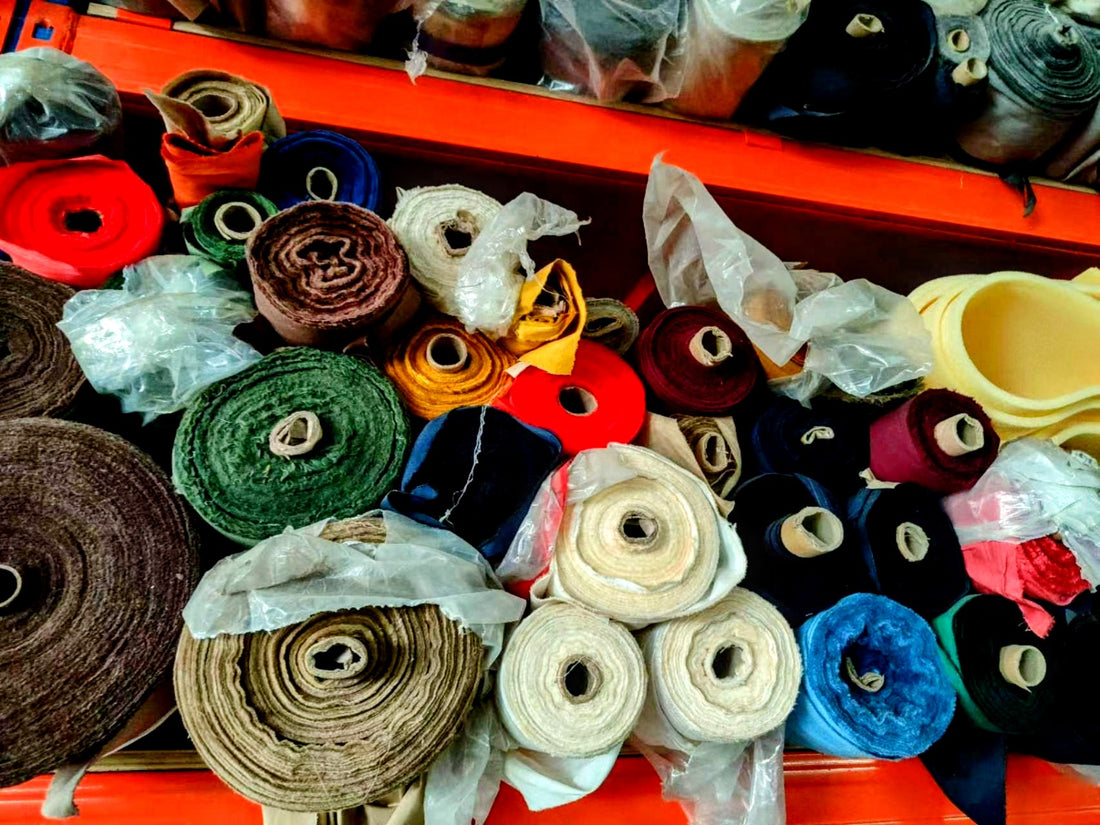
Stock fabrics: Deadstock vs. Running stock vs. On trend fabrics
Share
At Anthora, you see the word "deadstock" on our site and social media often. Because we are not currently producing any new materials, we use a lot of stock fabrics and trims. Stock fabric is a general term for any fabric that is available for purchase from a fabric supplier or manufacturer. So what do we really mean when we say we focus on deadstock and why is that important? Today we dive deeper into this topic.
Deadstock: Fabrics from overproduction, quality issues, color variations, canceled orders, or changing trends. Deadstock fabric is sometimes of high quality and durability, but it is limited in quantity and availability. Deadstock fabric is considered more sustainable and eco-friendly than running stock fabric, as it reduces textile waste and carbon emissions. However, it's often more cost effective for businesses to dispose of this stock instead of reselling, hence the name deadstock.
- We purposefully source for deadstock fabric to rescue useable good quality fabrics from disposal and to support the local textile industries, workers, communities and most importantly, our planet.
Running stock: Fabric that is continuously produced and replenished by the fabric supplier or manufacturer. Running stock fabric is usually made of standard or popular materials, colors, and patterns that are in high demand by the fashion industry. Running stock fabric is easy to source and order and you can buy only what you need.
- We also use running stock for trims and secondary fabrics on our products if we fail to source what we need to finish a product from deadstock.
Fast fashion on-trend stock fabric: A type of running stock fabric that is specifically designed to follow the latest fashion trends and seasons. Fast fashion on-trend stock fabric is usually made of cheap and low-quality virgin materials that are mass-produced and sold at low prices. Fast fashion on-trend stock fabric is often associated with negative environmental and social impacts, such as pollution, exploitation, and overconsumption.
- We do not use any trend stock, we make a stance to have no correlation and will not drive demand in this sector.
Photo by Hoiki Liu
